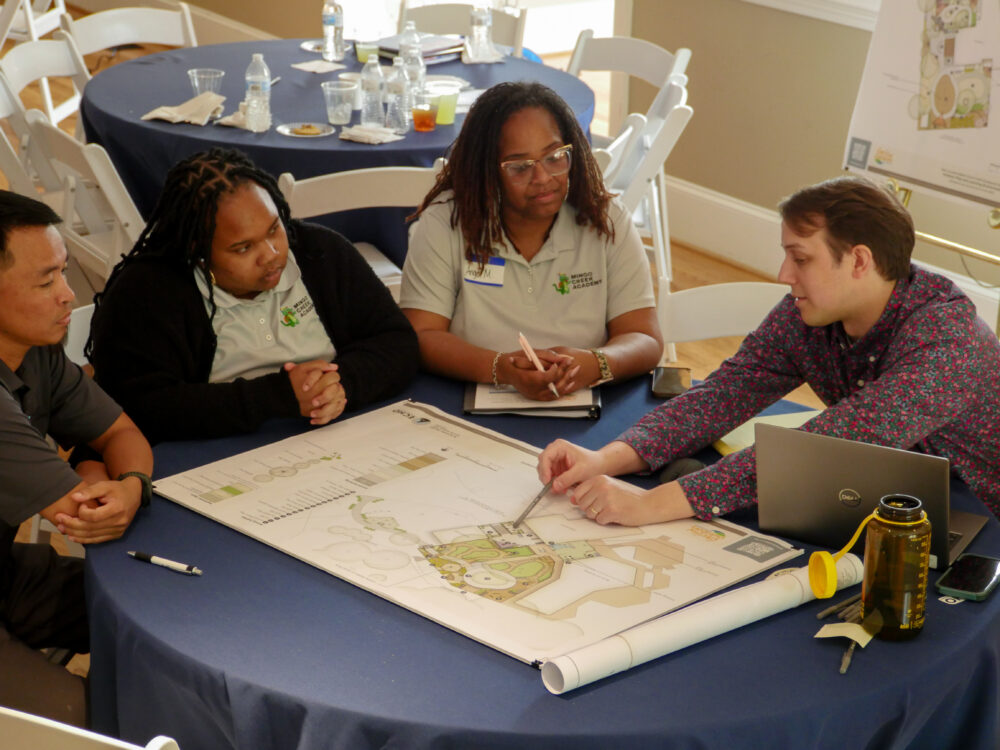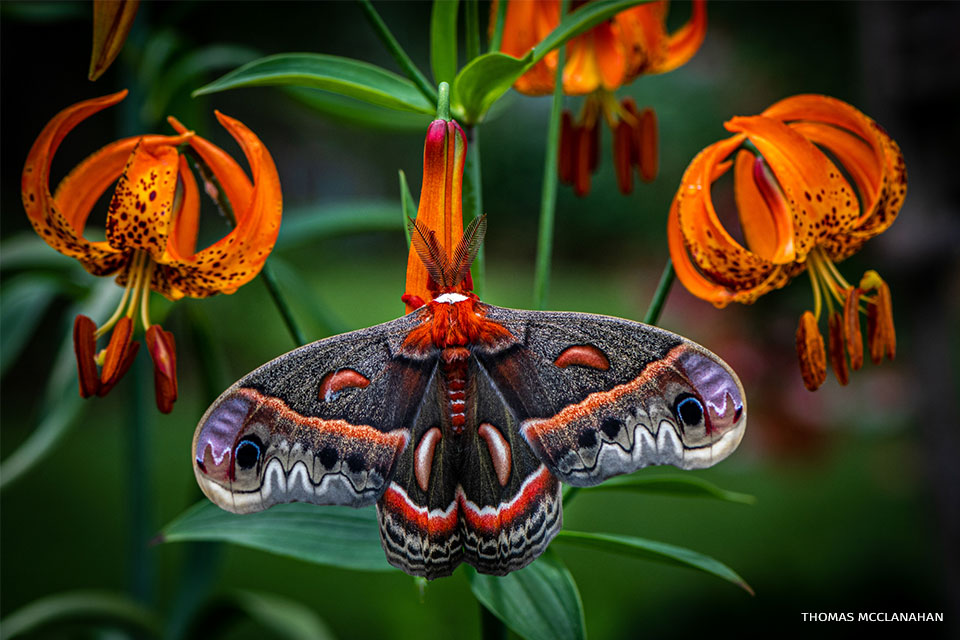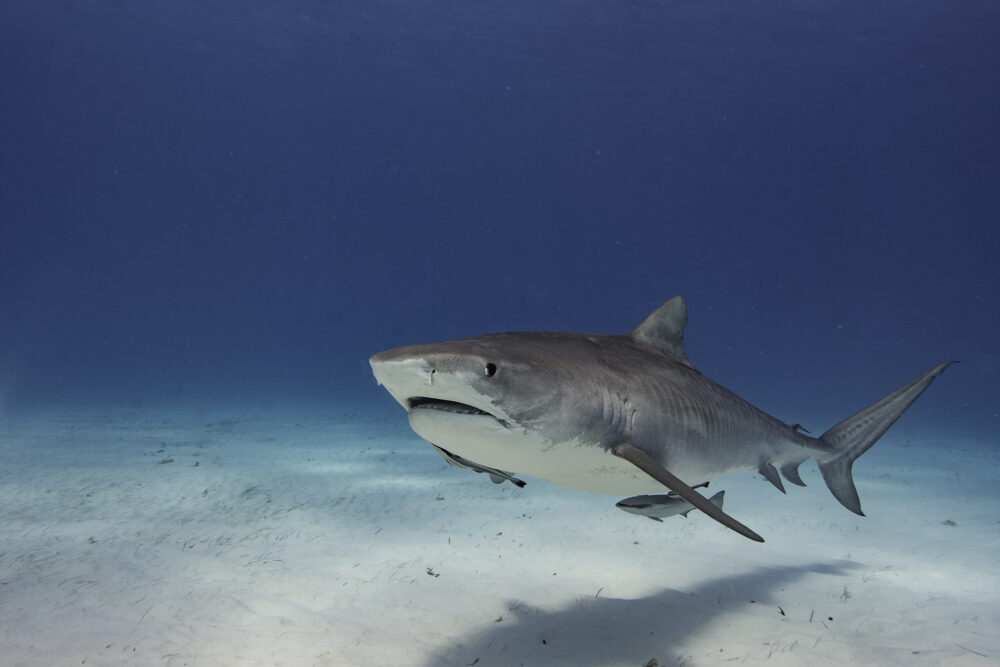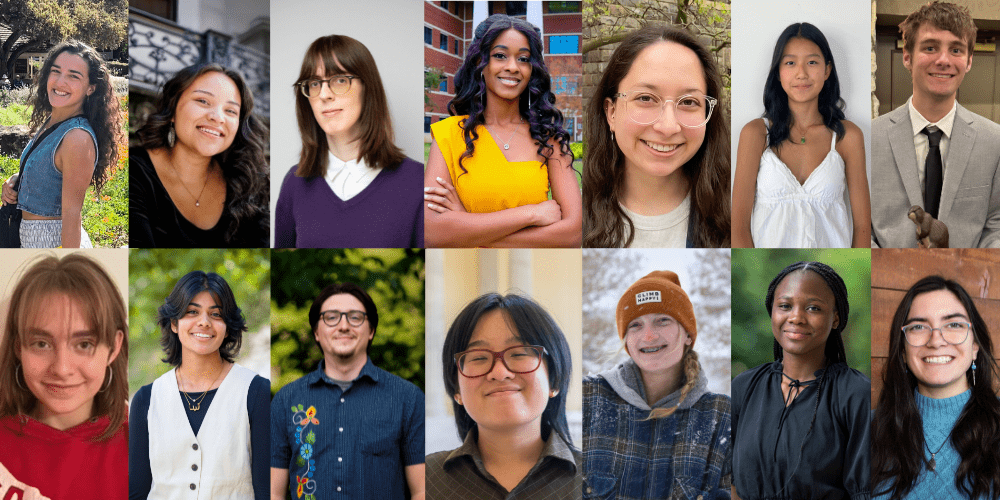We have much more to do and your continued support is needed now more than ever.
Education Newsletter Spring 2022
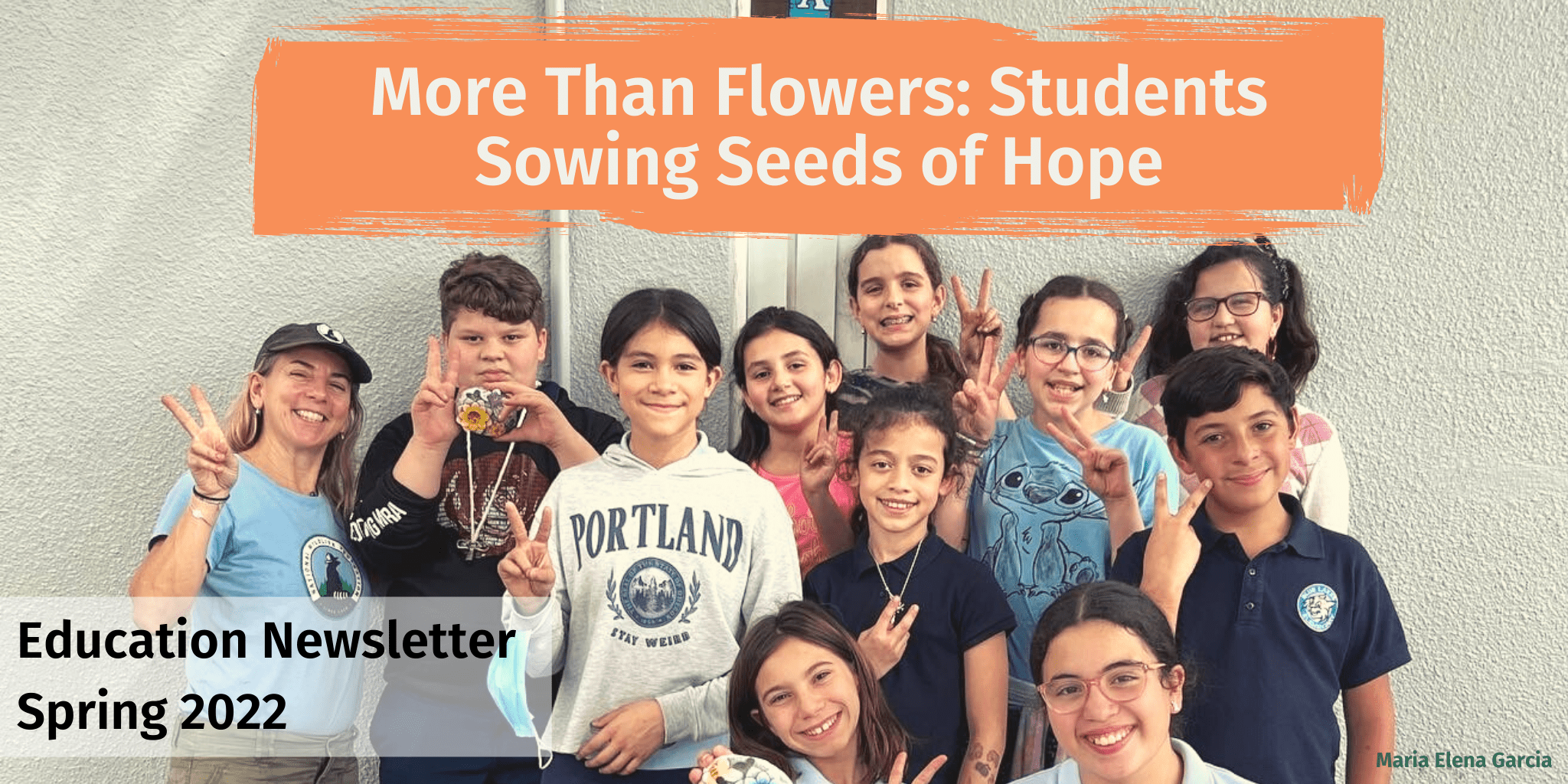
Hello, from the National Wildlife Federation’s Education Team
What does using nature as a classroom mean to you? For us, it’s an opportunity for students to approach learning in a hands-on way from a place of excitement and curiosity. To learn first-hand about things like biodiversity, pollinators, and community engagement, and to have a space to reflect on events happening in their neighborhood and around the world.
In this issue, we share:
- a story of peace from three elementary schools in South Florida
- the restoration and re-dedication of a nature trail in Georgia honoring two former students
- the climate action work happening in Michigan through the Eco-Green Program alongside our partner General Motors
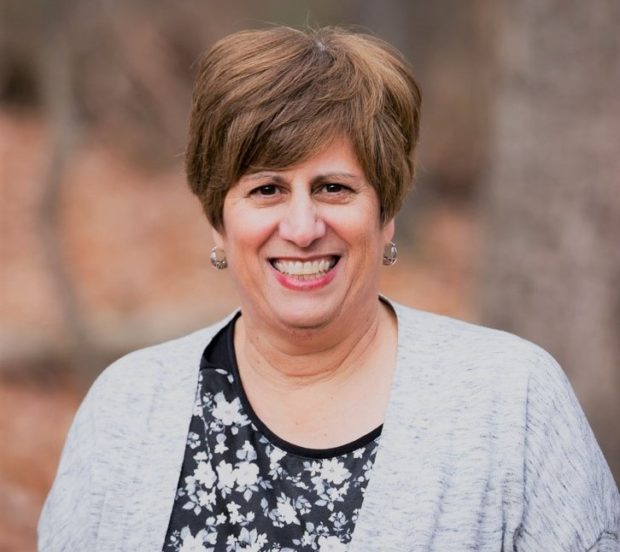
Stay tuned for our quarterly newsletter in August! In the meantime, follow us on Twitter and Facebook @EcoSchoolsUSA and Instagram @nwfeducation.
— Kath Race
Senior Coordinator NWF’s Education & Engagement
Weed Out Violence, Cultivate Peace
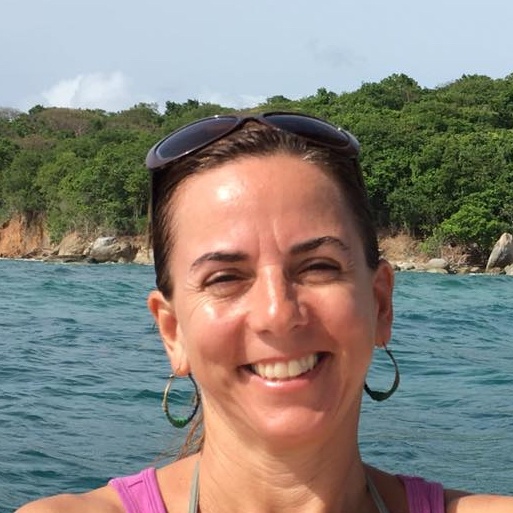
-Maria Elena Garcia, NWF Education Manager, South Florida
As part of their journey to obtain their bronze award from the Eco-School USA program, two elementary schools in South Miami decided to install butterfly gardens. The gardens increase biodiversity on their school’s grounds and teach their students the importance of providing a habitat for the Monarch butterfly, so it seemed like a perfect choice.
Five kindergarten teachers from Blue Lakes Elementary led the effort. They wrote letters to their student’s parents asking for plants, soil, and mulch donations, and they used the buddy system with 5th-grade students.
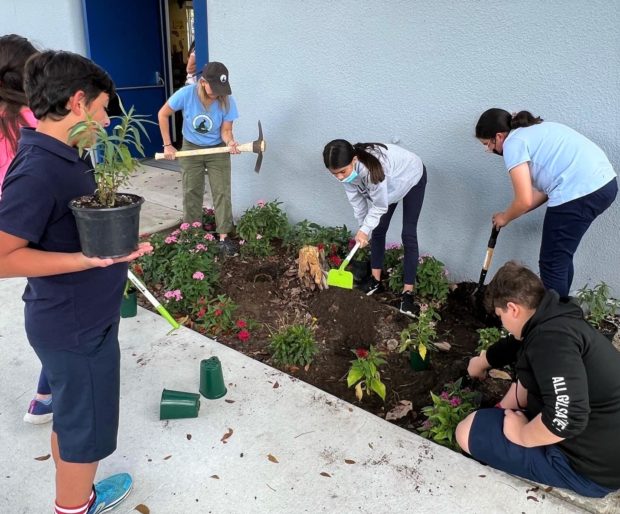
When we began planning in January, we had no idea that in a short amount of time, a major conflict was going to explode halfway across the world and that the word “war” was going to be very present in our daily lives. The war in Ukraine had just begun on February 24th, and the 5th graders wanted to, in some small way, dedicate their work and efforts to send a symbolic message of peace out to the world. That day the kindergarteners and 5th graders began painting their peace rocks. Once finished, the peace rocks were displayed around the butterfly garden.
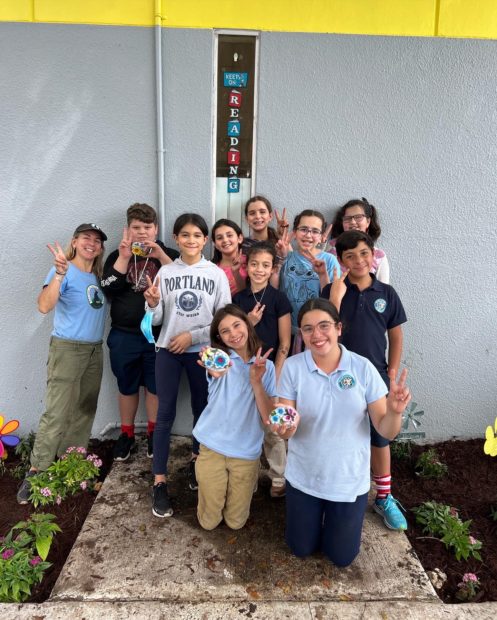
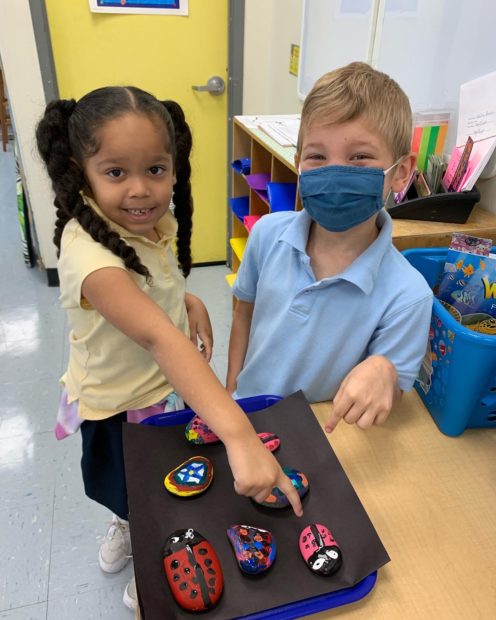
“The butterflies are going to love our garden because it’s made of us!”
Blue Lakes Elementary kindergarten student
Collaboration between Eco-Schools is an integral part of our work in South Florida. On the day they finished their peace rocks, I brought Monarch butterfly caterpillars from nearby Eco-school Royal Palm Elementary and introduced them to their new garden at Blue Lakes Elementary. Inspired by the message of peace from Blue Lakes Elementary, 2nd-grade students from Carlos J. Finlay Elementary also decided to dedicate their butterfly garden to peace in Ukraine.
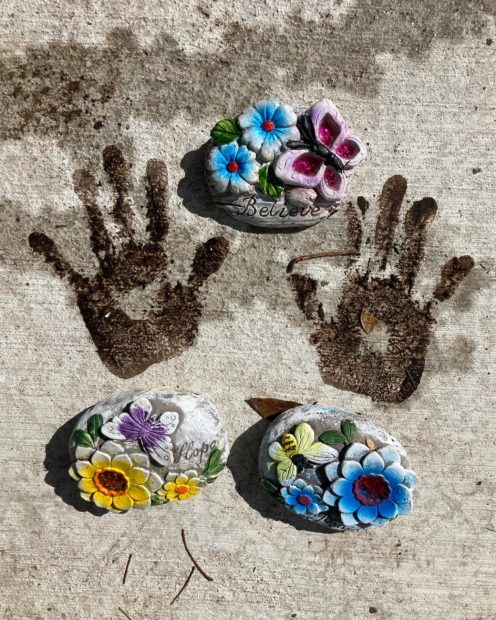
They made a beautiful heart-shaped sign with the phrase, “Weed out violence, cultivate peace.” And as part of this year’s Earth Day celebration, the school released Monarch butterfly caterpillars donated by Royal Palm Elementary in their garden.
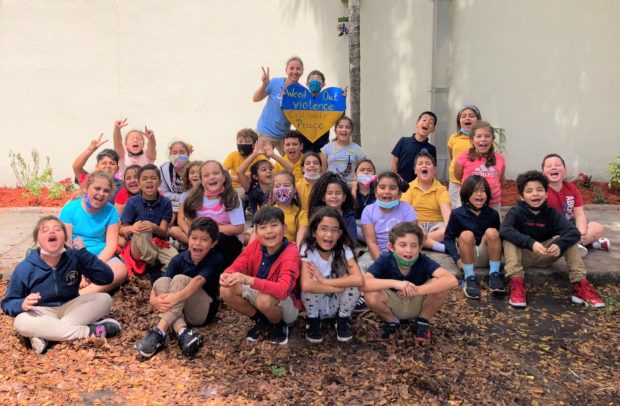
For more stories from South Florida, follow @ecoschoolsusasfl on Instagram!
A Melody of Learning at the Birdsong Nature Trail
Thirty years ago, on Earth Day, the Birdsong Nature Trail at Decatur, Georgia’s Oak Grove Elementary School was dedicated in memory of siblings Brian and Laura Birdsong. The two young students and 21 others passed away in a tragic plane crash near Brunswick, Georgia. Thirty years later, Oak Grove Elementary STEM teacher Kendall Xides received a $1,000 grant as the Georgia Department of Natural Resources 2021-22 Conservation Teacher of the Year. The money was awarded based on Xides’ proposal to restore the Birdsong Nature Trail, which includes the removal of overgrown, non-native plants and other work to bring the trail back to its former glory.
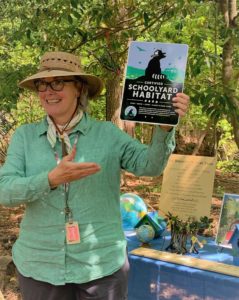

The culmination of the recent project work happened on Earth Day 2022 when the school came together to re-dedicate the Birdsong Nature Trail. They also officially recognized the outdoor space as a National Wildlife Federation (NWF) Certified Schoolyard Habitat. The restoration project will benefit school members along with the local community. We caught up to Kendall before the Earth Day ceremony to ask a few questions about her work:
What inspired you to restore and re-dedicate the Birdsong Nature Trail?
The Birdsong Nature Trail has been underutilized since I began working at our school seven years ago. When I decided to have the weathered brass entrance sign replicated and saw that the 30th anniversary was approaching, it seemed like the perfect time to make restoring the nature trail a priority in time for a re-dedication on the Earth Day anniversary.
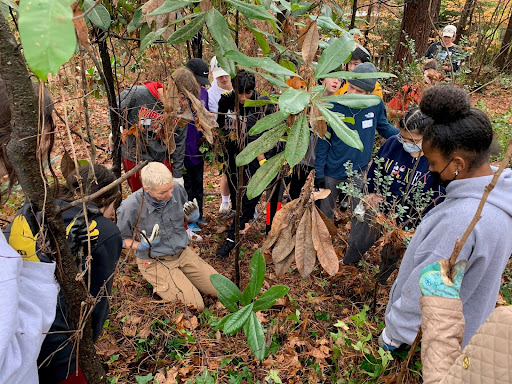
with instructions on removing invasive plants. Credit: Kendall Xides
Describe some of the curricular connections the students made as they were working outside of the classroom?
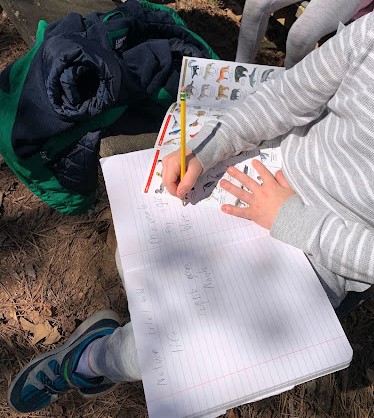
Working on the project, students across several grade levels have become more connected to the Piedmont region where they live and to the native plants and animals that live there. Learning about the adaptations of the magnolia and other plants on the nature trail gave them a better understanding of how food chains and habitats work.
One of my favorite lessons involves reading the story of a spaceship landing on the playground. While collecting plants from other worlds, alien scientists unknowingly leave behind seeds from their feet on the playground. I then have students draw what the alien plants might look like. Their science fiction plants are not too far off from some of the exotic plants threatening our forests and the nature trail.
Tell us about some of the actions students took as they worked to certify their Schoolyard Habitat?
The list is long of all the things the students did as they worked to certify their Schoolyard Habitat, but here are a few:
- assessed the Birdsong Nature Trail using the NWF checklist
- brainstormed ideas of how to improve the space
- utilized data collected from the Great Georgia Pollinator Census to help determine what plants to add
- added native plants like mayapple and native azalea, and started sunflower and zinnia seedlings which will also be added to the sun pollinator garden
- wrote letters to local businesses, leading to donations of native plants, nesting boxes, and a birdbath
Much of this work wouldn’t be possible without our high school students and some parents (and a few Oak Grove Elementary students) who did the majority of the invasive plant removal on weekends.

What lessons have you learned about working with students in an outdoor learning environment?
It’s important to remember that not all students are initially comfortable outdoors, especially those with preconceived fears. Outdoor classroom orientation can help, along with reminders for everyone that we need to be respectful of the plants and animals that live in the space we are fortunate to share for learning. Students are eager and engaged when they have a specific goal and can visibly see the outcomes of their work.
For more, visit the Birdsong Trail Anniversary Project here!
Engines of Ingenuity for General Motors Eco-Green Partnership
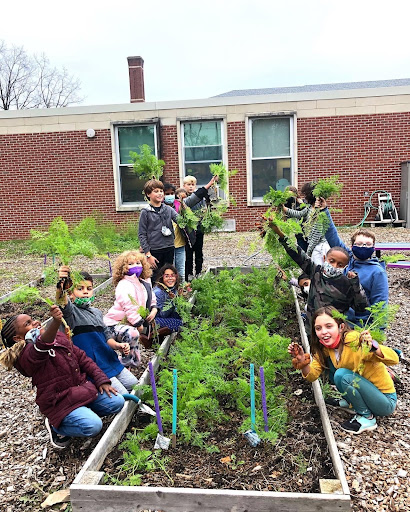
The 2021-22 school year continues to be a challenging year for schools across the country as they navigate the COVID19 pandemic through remote, in-person, and hybrid learning. During this time, many students and families have had to address the impacts of COVID, including losing family members, incomes, and a sense of stability.
Through it, all 15 returning schools and five new schools joined together in partnership with the National Wildlife Federation and General Motors to support student projects and learn about climate change and sustainability in our GM Eco-Green program.
The GM Eco-Green partnership highlights how important hands-on and project-based environmental learning is to student learning and wellness, especially during a pandemic and climate crisis.
Anita Singh, NWF National Field Education Manager
Burns Park Elementary students in Ann Arbor, Michigan, are building a website to share their research on climate change with other schools in the district and beyond. On April 8th, Neha Shah’s 4th-grade class presented their research and in-progress projects on a virtual webinar. Each student presented their topic raging from pollinators to solar power to rain gardening. GM mentors Breitner Marczewski and Jennifer Maiorana presented GM’s vision for an all-electric carbon-neutral future tying in Burns Park student learning to the real world. U Prep Middle School in Detroit was able to attend and ask critical questions, further building a relationship between the schools.
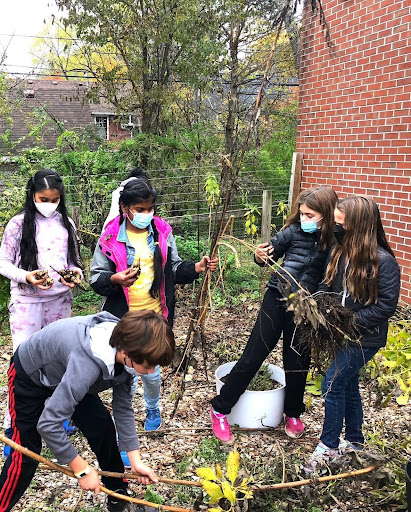
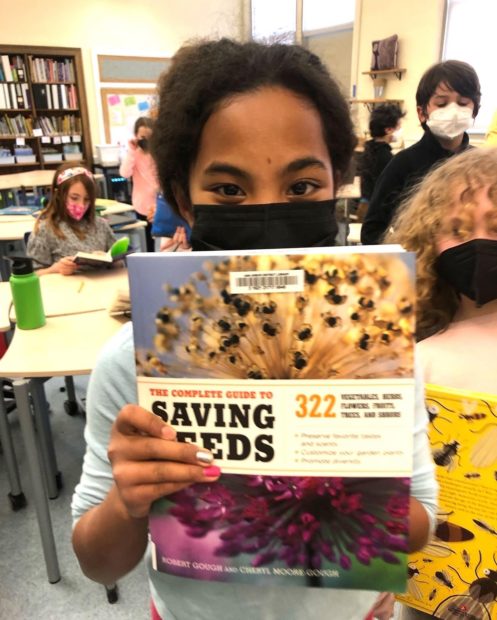
Burns Park students are also using their research to develop green infrastructure at their school and are currently working on their school gardens. With upcoming spring workdays planned, students will take their research and implement their concepts and learnings into their schoolyards. Many other Michigan schools in the GM Eco-Green program, from Hamtramck High School to Butcher Middle School Math Science Technology Center (MS)2TC to Denby High School, are also busy planting their gardens and developing their schoolyard habitats. Spring is a beautiful and busy time for Eco-Green schools, and we can’t wait to see what the students create!
Resources
What We Are Reading:
- The special Garden for Wildlife issue of National Wildlife® magazine
- All We Can Save – a collection of short writings from over 50 women at the forefront of the climate movement
Upcoming Webinar
- May 11, 2022, at 6:30 p.m. Schoolyard HabitatsⓇ Webinar: Expanding and Maintaining Your Outdoor Classroom for Learning: Design Ideas & Tools, Community Partnerships, & Funding.














